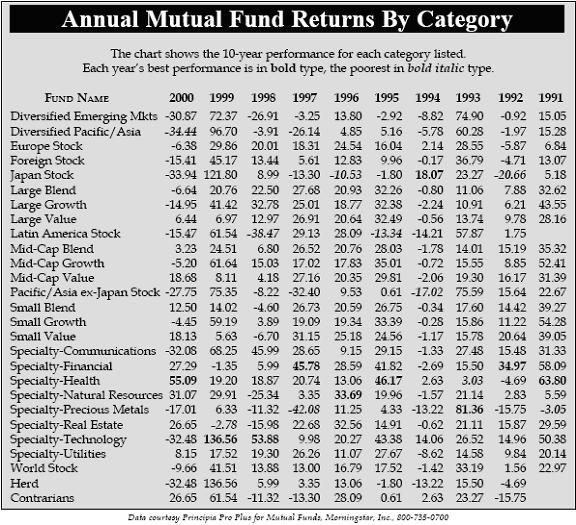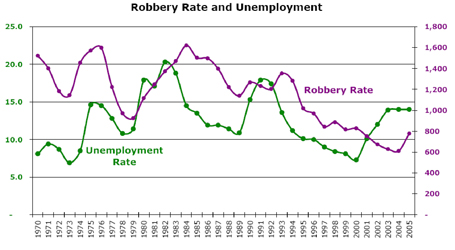Every so often an academic study comes along that changes the way we think about investing. One such study, published in 1986, taught us that asset allocation, rather than stock picking or market timing, is by far the most important factor that determines the returns that a portfolio will generate over time.
Now another study has come out, confirming and extending the prior findings while seeking to correct some misinterpretations of the earlier work. Asset allocation really is the driving force behind portfolio performance, but active managers can make a difference. Note the word “can.” While some managers do add value, the latest report says, on average they do not — and probably never will.
The new study’s authors are Roger Ibbotson, the Yale finance professor and chairman of Ibbotson Associates, whose data on historic market performance is the foundation for much of today’s portfolio management industry, and Paul Kaplan, vice president and chief economist at Ibbotson Associates. (You can download the study, entitled “Does Asset Allocation Policy Explain 40%, 90%, or 100% of Performance?” at www.ibbotson.com.)
The Ibbotson/Kaplan report builds on the 1986 work of Gary Brinson, L. Randolph Hood and Gilbert Beebower, who studied the performance of 91 large U.S. pension plans between 1974 and 1983. (Brinson, Beebower and Brian Singer published a follow-up study in 1991 that essentially confirmed the results of their first paper. Both studies were published in the Financial Analysts Journal.) The 1986 and 1991 studies concluded that, on average, asset allocation explains more than 90% of the quarterly variation in a given portfolio’s returns.
Over the years the Brinson report has taken on the aura of Gospel in the investment community, but Ibbotson says it is widely misunderstood. The Brinson group sought to explain what factors made a given portfolio’s returns better or worse in a particular quarter. Brinson did not seek to explain why Portfolio A might outperform Portfolio B. This is one of the tasks Ibbotson and Kaplan set out to accomplish.
First, they replicated Brinson’s results with two new sets of data. Ibbotson/Kaplan looked at 10 years of monthly returns for 94 balanced (i.e., stock and bond) mutual funds and 10 years of quarterly returns for 58 pension funds. They confirmed Brinson’s finding that asset allocation explains about 90% of the period-to-period variability of a portfolio.
Next, they compared each fund’s returns to those of the other funds to determine how much of the difference between funds could be explained by asset allocation policy. If each fund was invested passively (as in a combination of index funds) with the same asset allocation, there would be no variation at all between funds. On the other hand, if each fund was invested passively but with different asset allocations, all of the inter-fund variation would be due to asset allocation, since there would be no active management.
The Ibbotson/Kaplan study finds that only about 40% of the variation between funds is derived from differences in asset allocation. The remaining 60% of fund performance variation results from such other factors as the timing of moves between asset classes, security style (e.g. value or growth stock) within asset classes, security selection, and expenses.
This is no great shock, when we reflect on it. If we compare an actively managed, large-capitalization U.S. stock fund to a Standard & Poor’s 500 index fund, we would expect to see differences in performance arising from the success or lack thereof of the active manager’s moves and from the higher expenses that accompany active management. Still, we would expect in most periods to see these two funds’ returns be closer to each other’s level than to, say, the three-month Treasury bill rate. Factors other than asset allocation may account for most of the difference between funds, but the differences between funds in a given asset class are, we would expect, typically much smaller than the differences between asset classes. Unfortunately, the Ibbotson/Kaplan study does not give us the details we need to confirm this assumption.
Finally, Ibbotson and Kaplan tell us that asset allocation ultimately accounts for all of the absolute level of performance of the portfolios they studied — on average. In fact, the average fund performs slightly below the level one would expect for its asset allocation. This is because the average of all investors is the market itself, so the good managers and the bad tend to cancel each other out before expenses are considered. Since expenses do not net out across investors, the average return in a portfolio is pushed below the average return for the market.
What practical guidance can we draw from the Ibbotson/Kaplan work? Here is what I see:
- Asset allocation is still the unquestioned driver of portfolio performance. Since effective and ineffective managers cancel each other out in the marketplace, asset allocation — taking advantage of the fact that the markets tend to go up over time — is the only reason the average investor makes any money investing.
- Active managers can earn their keep if you know how to pick the good ones. Unfortunately, Ibbotson/Kaplan offer no help on this score other than citing another study suggesting that hot managers tend to stay hot and cold managers cold. I lean more toward the theory that in the most closely followed and efficient markets, such as for major American companies, it is nearly impossible for any active manager to be a consistent winner. This is why index funds continue to look so good. I prefer to seek active managers in smaller, less liquid or niche marketplaces and to use indexes for the big stocks.
- No investment strategy can help if you sit on the sidelines. A big part of effective investing is in the fundamental work of getting cash invested quickly, keeping your asset allocation at the desired balance, and knowing your own risk tolerance so you can resist the temptation to bail out at the first sign of turbulence.











